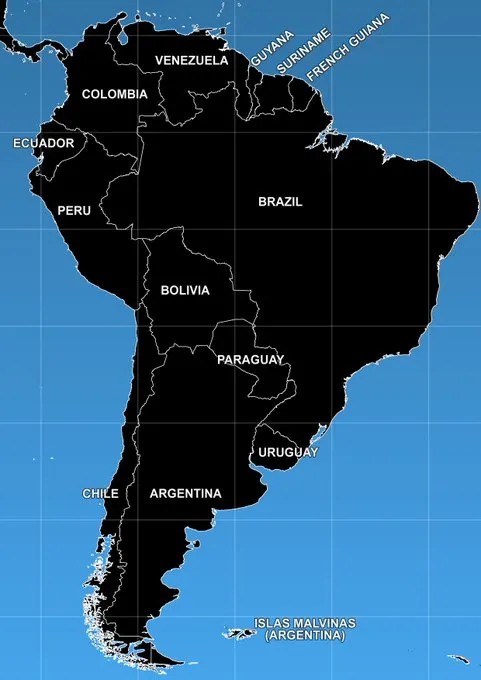Bolivia’s a linguistic jungle, smack in South America, it’s got 37 official languages, more than anywhere else! That’s not just a number; it’s history, pride, and pure grit baked into every word. You’re walking through La Paz’s markets, and Spanish is flying everywhere; 70% of the 12 million folks use it daily. Then hit the Andes, and Quechua’s humming in villages, or Aymara’s echoing by Lake Titicaca. It’s not just chatter; it’s culture fighting to stay alive. Let’s dive into this mess, what’s spoken, how they got official, and why it’s worth the hustle.

Quick Snapshot
- Spanish: The big boss, 70% of people lean on it for government, school, TV.
- Indigenous Crew: 36 others are official, Quechua (18%), Aymara (10%), plus Guaraní, Chiquitano, and a bunch of others.
- Official Move: 2009 Constitution said, “All 37 count!” Huge win for culture, though some are fading fast.
- Rough Edges: Kids are ditching indigenous tongues for Spanish, but schools and locals are pushing back hard.
- Fun Bit: The national anthem is in six indigenous languages, talk about showing off!
Spanish: The Everyday Hustle
Spanish? It’s everywhere; about 70% of Bolivians, roughly 8.4 million, call it their first language. It runs the country, fills classrooms, and blasts from radios. The Spanish colonists dropped it in the 1500s, and it stuck, especially in buzzing cities like Santa Cruz or La Paz. But it’s not one-size-fits-all, up in the highlands, you’ve got Andean Spanish with its crisp edges; down in Beni, it’s Camba Spanish with a laid-back drawl; and around Chuquisaca, Chapaco Spanish throws in some local spice, even a hint of Portuguese near Brazil. Cool, right?
Lots of folks pick it up as a second language too, especially in towns where it’s the glue holding everyone together. Still, it can shove the smaller languages into the shadows. That’s why Bolivia’s been scrapping to keep the indigenous ones kicking.
Indigenous Tongues: The Heartbeat
2009 was a game-changer, Bolivia’s Constitution made 36 indigenous languages official alongside Spanish. That’s a nod to the indigenous majority, over half the population. These aren’t just words; they’re packed with stories, rituals, and ways of living. Here’s the rundown.
- Quechua: Around 2.4 million folks (18%) speak it, mostly in Cochabamba or Potosí’s Andes. It’s the old Inca language, still loud in markets, though kids are drifting to Spanish. Not much written stuff, mostly just the Bible, and it splits into dialects like Quechua II. Tough to keep it alive!
- Aymara: About 1.5 million (10%) use it, especially around Lake Titicaca in La Paz and Oruro. Ancient as heck, one of the oldest in the Americas, and the Aymara people cling to it. It’s official in Peru and Chile too, with its vibe, kinda like a cousin to Quechua.
- Guaraní: Just 33,000 in the southeast near Paraguay. It’s a Tupian language, big in Paraguay, thriving with oral tales and music in rural spots.
- Chiquitano: Around 6,000 in central Santa Cruz. Small but alive, especially at local festivals.
- The Rest: 36 total, names like Araona, Baure, Bésiro. Some, like Puquina or Machajuyai-Kallawaya, are down to a handful of speakers. Others, like Mojeño-Trinitario (10,000) or Cavineño (1,200), hang on in the Amazon. But 23 have under 1,000 voices, and 12 are basically ghosts, per Ethnologue.
That 2009 law (Article 234 and the 2012 Linguistic Rights Law) says offices and leaders should mix in at least one indigenous language with Spanish, like Aymara in La Paz or Guaraní in the Chaco. The problem is, there’s no real punishment if they slack off, so cities often ignore it.
Immigrant Flavors
Bolivia’s not just Spanish and indigenous, immigrants added their twist. None are official, though. Standard German leads with 160,000 speakers, mostly Mennonites in Santa Cruz using Plautdietsch daily and German for church. Portuguese pops up near Brazil with 24,000 (0.2%). In Santa Cruz de la Sierra, you might catch Arabic or other tongues, 49 total floating around from diverse newcomers. Wild mix!
Day-to-Day Chaos
In La Paz or Cochabamba, Spanish rules, shops, buses, you name it. But hit the countryside, and it flips. In a Potosí Quechua village, vendors swap stories in Quechua, maybe tossing in Spanish for tourists. By Lake Titicaca, Aymara kids might learn it at home but switch at school. The 2012 census says 9.7% of Bolivians (age 3+) skip Spanish, mostly in rural Cochabamba, where over half stick to indigenous tongues.
The government’s trying. Since 1994, schools should teach both languages, but urban spots often drop the ball. The anthem’s in six indigenous languages, Aymara, Bésiro-Chiquitano, Guaraní, Guarayu, Quechua, and Mojeño-Trinitario, to flex that diversity. Oruro’s Carnival mixes languages in songs, and language groups are fighting to keep them going.
The Fight to Survive
Here’s the kicker: these languages are slipping. Kids, especially in cities, learn Spanish for jobs or to fit in. Ethnologue flags 13 as “threatened,” 12 nearly gone, like Itonama with 5 speakers or Cayubaba with 4. Spanish is all over, TV, signs, government, while indigenous tongues lack books or apps to stay fresh. No Spanish? Good luck with work or bureaucracy.
But there’s hope. Bilingual schools and the Plurinational Institute for Languages (Ipelec) are recording and teaching them. In 2019, they eyed adding three more, though it’s stalled. Rural grandparents teach kids, and local radio sometimes airs Quechua or Aymara. It’s a slow battle!
Fun Tidbits
- Language Maps: A 2012 study found 16 non-Spanish languages leading in 339 municipalities. Portuguese tops 19 near Brazil.
- Mennonite Twist: Santa Cruz Mennonite kids learn Plautdietsch and German but pick up Spanish to blend.
- Signs: El Alto’s Aymara areas have dual-language signs—pretty cool!
- Tales: Guaraní lives through oral stories, tricky to write down.
- Tech Gap: Most lack apps or websites, though Quechua keyboards are creeping in.
Why It Matters
These 37 languages aren’t just stats, they’re Bolivia’s soul. Spanish keeps the wheels turning, but Quechua, Aymara, and the rest hold the spirit of the indigenous majority. The 2009 law screamed, “They count!” Losing them means losing stories, traditions. Keeping them takes grit, schools, communities, and even you trying a “Kamisaki” (hello in Aymara) or “Allillanchu” (hello in Quechua). It’s about respect for a culture that won’t give up.

